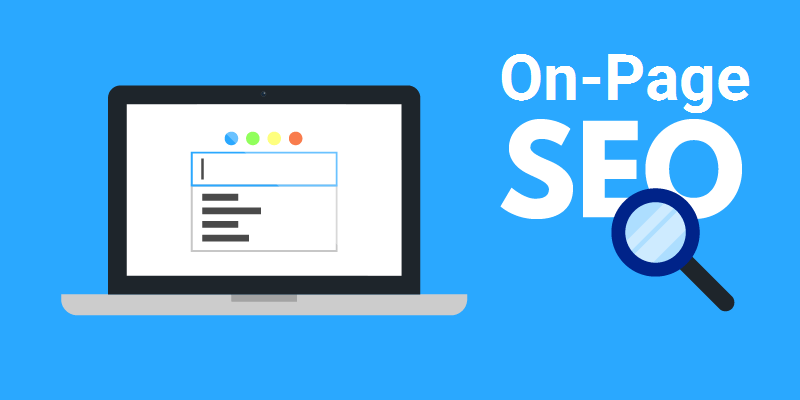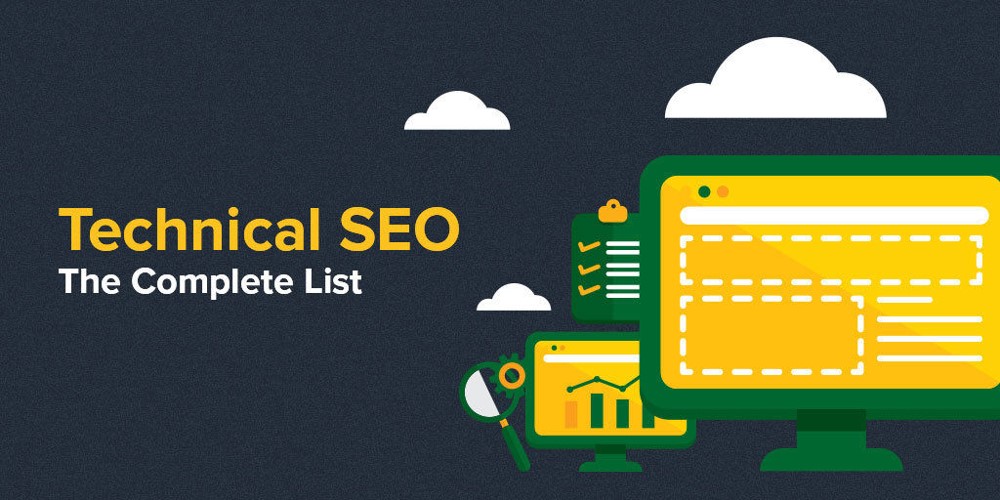
Learn how to optimize your website for SEO and improve your chances of ranking higher in search results. In today’s dynamic digital landscape, establishing a strong online presence is paramount for businesses and individuals alike. Central to this endeavor is the practice of Search Engine Optimization (SEO), a strategic approach that holds the key to unlocking your website’s potential visibility and prominence on search engine results pages (SERPs). In this introductory section, we will embark on a journey into the world of SEO, uncovering its significance, underlying principles, and the transformative impact it can have on your online endeavors.
Optimize Your Website for SEO
Search Engine Optimization, or SEO, is the systematic process of enhancing a website’s visibility and relevance on search engines like Google, Bing, and Yahoo. By fine-tuning various aspects of a website, SEO aims to secure higher rankings on SERPs for specific keywords and phrases. The ultimate goal is to attract organic (unpaid) traffic, improve user engagement, and establish a formidable online presence.
Navigating the Digital Landscape
In today’s information-driven society, search engines are the gateway through which users explore the vast expanse of the internet. When users search for information, products, or services, search engines curate a list of results that align with their queries. It’s within this digital arena that SEO emerges as the guiding force that determines which websites garner attention and which remain hidden in obscurity.
The Significance of SEO
Visibility and Credibility: Appearing on the first page of search results significantly increases the likelihood of user clicks. High rankings lend credibility and trustworthiness to a website, as users tend to associate top positions with authoritative sources.
Organic Traffic: Unlike paid advertising, which requires ongoing investment, SEO-driven organic traffic brings sustained visitors without incurring additional costs. This consistent flow of users can have a positive impact on brand awareness, engagement, and conversions.
The SEO Ecosystem
SEO is a multifaceted discipline that encompasses a range of strategies and techniques. From optimizing on-page elements like content and keywords to enhancing technical aspects such as site speed and mobile-friendliness, each facet contributes to a cohesive framework that influences search engine algorithms.
The Constant Evolution
It’s important to note that SEO is not a static endeavor; it’s an ever-evolving field. Search engines continually refine their algorithms to deliver more accurate and relevant results to users. As a result, the strategies employed today might need adjustment tomorrow to align with the latest trends and algorithm updates.
Understanding SEO Basics
What is SEO?
SEO, or Search Engine Optimization, is the process of enhancing the visibility of your website on search engine results pages (SERPs). It involves various techniques and strategies to improve your website’s organic (unpaid) search rankings.
Why is SEO Important?
SEO is vital because the majority of online experiences start with a search engine. When your website ranks higher in search results, it’s more likely to attract clicks, organic traffic, and potential customers. Proper SEO can lead to increased brand awareness, credibility, and ultimately higher conversion rates.
Read More: The Latest Top 3 Types Of SEO in 2023
Keyword Research and Analysis
Conducting Effective Keyword Research
Keyword research is the foundation of successful SEO. It involves identifying the specific words and phrases that users are likely to search for when looking for content related to your industry, products, or services.
Relevance: Choose keywords that are directly relevant to your business and the content you provide. The keywords you target should accurately reflect what your website offers.
Search Volume: Use keyword research tools to determine the search volume of different keywords. Focus on keywords that have a decent search volume but are not overly competitive.
Long-Tail Keywords: Consider targeting long-tail keywords—more specific and longer phrases—that can attract highly targeted traffic. These keywords often have lower competition and can lead to higher conversion rates.
Utilizing Keyword Tools
Google Keyword Planner: This tool offers insights into keyword search volume, competition, and related keywords. It’s a valuable resource for finding relevant keywords for your content.
SEMrush: SEMrush provides in-depth keyword analysis, including information on keyword difficulty, competition, and trends. It also offers insights into your competitors’ keywords.
Ahrefs: Ahrefs helps you discover keywords that your competitors are ranking for and provides information about their search volume and ranking difficulty.
Long-Tail Keywords: The Hidden Gems
While broad keywords are important, long-tail keywords shouldn’t be overlooked. These longer and more specific phrases can attract users who are closer to making a purchasing decision.
User Intent: Long-tail keywords often reflect user intent more accurately. Users searching for specific phrases are more likely to convert into customers.
Less Competition: Long-tail keywords usually have less competition, making it easier for your content to rank higher in search results.
Voice Search Optimization: With the rise of voice search, long-tail keywords are becoming even more important, as users tend to use natural language when conducting voice searches.
Keyword Mapping and Implementation
Once you’ve identified your target keywords, it’s important to strategically incorporate them into your content.
Title Tags and Meta Descriptions: Include your primary keyword in the title tag and meta description to increase relevance and click-through rates.
Headers and Subheadings: Use your keywords naturally in headers (H1, H2, etc.) to indicate the structure of your content to both users and search engines.
Content Body: Incorporate your keywords naturally throughout the content. Avoid keyword stuffing, as it can harm your SEO efforts.
On-Page SEO

Crafting Compelling Title Tags and Meta Descriptions
Title tags and meta descriptions are essential elements of on-page optimization. They provide users with a sneak peek into what your webpage offers. Crafting these elements effectively can significantly impact your click-through rates and overall website for SEO performance.
Title Tags: Your title tag is the main heading that appears on search engine results pages. It should accurately represent the content of the page while incorporating relevant keywords. Keep it concise, typically under 70 characters, to ensure it’s fully displayed in search results.
Meta Descriptions: The meta description is a brief summary of the content that follows the title tag on search results. While meta descriptions don’t directly affect rankings, they influence whether users click on your link. Write compelling meta descriptions that encourage users to click through to your website.
The Significance of High-Quality Content
Content is the heart and soul of your website. Not only does it inform and engage visitors, but it also plays a pivotal role in SEO. High-quality content satisfies user intent and encourages them to spend more time on your site, reducing bounce rates and improving your search engine rankings.
Keyword Integration: Incorporate your target keywords naturally within the content. However, avoid keyword stuffing, as it can negatively impact user experience and website for SEO.
Engaging Headings: Break up your content with engaging headings (H2, H3, etc.). This not only improves readability but also helps search engines understand the structure of your content.
Originality and Value: Craft unique and informative content that provides value to your audience. Avoid duplicating content from other sources, as search engines prioritize originality.
Optimizing Images for SEO
Images contribute to the visual appeal of your website, but they can also affect its performance if not optimized properly. Follow these steps to ensure your images contribute positively to your SEO efforts.
Descriptive Filenames: Use descriptive filenames that accurately reflect the content of the image. Avoid generic names like “image123.jpg.”
Alt Text: Alt text (alternative text) is used to describe images to users who can’t see them, such as those using screen readers. Include relevant keywords in the alt text while keeping it descriptive.
Image Compression: Large images can slow down your website’s loading speed. Use image compression tools to reduce file sizes without compromising quality.
Image Sitemaps: Include images in your XML sitemap to help search engines index them. This improves the likelihood of your images appearing in image search results.
Incorporating these on-page optimization techniques can significantly enhance your website’s SEO performance and user experience. By focusing on crafting engaging title tags and meta descriptions, producing high-quality content, and optimizing images effectively, you’ll be well on your way to climbing the search engine ranks and attracting a broader audience.
Technical SEO

Mobile-Friendly Website
In today’s digital landscape, mobile devices play a significant role in internet usage. Google, along with other search engines, considers mobile-friendliness as a crucial ranking factor. A mobile-friendly website ensures that users have a seamless and enjoyable experience, regardless of the device they use to access your site.
Responsive Design: Implement a responsive design that automatically adjusts your website’s layout and content based on the user’s screen size. This ensures a consistent experience across various devices.
Mobile Testing: Regularly test your website’s mobile-friendliness using tools like Google’s Mobile-Friendly Test. This helps you identify any issues that might affect user experience on mobile devices.
Page Speed: Mobile users often have limited patience for slow-loading pages. Optimize your website’s loading speed by minimizing heavy images, leveraging browser caching, and using compression techniques.
Page Speed Optimization
Page speed is not only crucial for user experience but also impacts your website’s SEO performance. Search engines prioritize fast-loading websites, as they provide a better user experience and encourage users to stay on your site longer.
Minimize Server Response Time: Optimize your server’s response time by using efficient hosting services and minimizing resource-intensive processes.
Leverage Browser Caching: Browser caching stores static resources like images, CSS, and JavaScript files in the user’s browser. This reduces the need for repeated downloads, improving page loading speed.
Optimize Images: Images are often a major contributor to slow-loading pages. Compress images without compromising quality and use lazy loading to load images as users scroll down the page.
Schema Markup
Schema markup is a form of structured data that provides additional context to search engines about your content. It helps search engines understand the meaning behind your content, which can lead to enhanced search results, including rich snippets and knowledge graph information.
Implementation: Use schema markup to mark up different types of content on your website, such as articles, reviews, events, and products.
Benefits: Schema markup can lead to improved click-through rates by providing users with more detailed information in search results.
XML Sitemaps
XML sitemaps are files that provide search engines with a roadmap of your website’s structure and content. They help search engines discover and index your web pages more effectively.
Regular Updates: Keep your XML sitemap updated whenever you add new content, remove old content, or make significant changes to your website’s structure.
Submit to Search Engines: Submit your XML sitemap to search engines through Google Search Console or other webmaster tools. This ensures that search engines are aware of your site’s structure and content.
By focusing on mobile-friendliness, optimizing page speed, implementing schema markup, and maintaining up-to-date XML sitemaps, you’ll enhance the technical aspects of your website’s SEO. These strategies not only improve your search engine rankings but also contribute to a smoother user experience and increased visitor engagement.
Off-Page Optimization

The Power of Backlinks
Backlinks, also known as inbound links or incoming links, are links from external websites that point to your website. These links serve as a vote of confidence in the quality and relevance of your content. Search engines consider backlinks as a key factor in determining the authority and credibility of your website.
Quality Over Quantity: Focus on acquiring high-quality backlinks from reputable and authoritative websites within your industry. A few high-quality backlinks can have a more positive impact than numerous low-quality ones.
Natural Link Building: Aim for natural and organic link building. Avoid tactics like buying backlinks or engaging in link schemes, as these can lead to penalties from search engines.
Social Media Signals
While social media signals do not have a direct impact on search engine rankings, they can indirectly influence your website’s visibility and traffic. Social media platforms serve as channels for sharing your content, engaging with your audience, and potentially attracting valuable backlinks.
Content Sharing: Share your website’s content on your social media profiles to reach a wider audience and encourage engagement.
Engagement and Interaction: Engage with your followers, respond to comments, and foster meaningful interactions. Positive engagement can lead to increased visibility and potentially attract more visitors to your site.
Guest Blogging
Guest blogging involves writing and publishing articles on other websites within your industry. This strategy allows you to showcase your expertise, reach a new audience, and acquire valuable backlinks to your own website.
Relevance and Quality: When guest blogging, focus on websites that are relevant to your industry and have a good reputation. Write high-quality, informative content that provides value to the readers.
Author Bio and Backlinks: Most guest blogging opportunities allow you to include an author bio with a link back to your website. Ensure that your author bio is engaging and includes relevant information about yourself and your expertise.
Online Communities and Forums
Engaging in online communities, forums, and discussion platforms related to your industry can help you build your online presence and acquire backlinks.
Helpful Contributions: Participate in discussions by providing valuable insights, answering questions, and sharing your expertise. Avoid overly promotional content, as the goal is to build credibility and establish yourself as an industry expert.
Linking to Relevant Content: When appropriate, share links to relevant content on your website that can provide additional value to the community members.
By understanding the power of backlinks, leveraging social media signals, exploring guest blogging opportunities, and engaging in online communities, you can enhance your website’s off-page optimization efforts. These strategies not only improve your website’s authority but also broaden its reach and potential for attracting organic traffic.
Read More: SEO Hacks 2023: How to Rank 1st Page in Google SERPS
Conclusion: Optimize Your Website for SEO
In conclusion, optimizing your website for SEO is not a one-time task but an ongoing process. By understanding website for SEO basics, conducting thorough keyword research, implementing on-page and technical optimization, and leveraging off-page strategies, you can significantly improve your website’s visibility and drive organic traffic. Remember that SEO takes time to show results, so patience and consistent efforts are key.
FAQs: Optimize Your Website for SEO
How long does it take to see results from SEO efforts?
SEO results vary, but it usually takes a few months to start seeing noticeable improvements in rankings and traffic.
Is paid advertising better than SEO?
Paid advertising can provide immediate results, but SEO offers long-term sustainable traffic without ongoing ad spend.
Can I do SEO on my own, or do I need to hire professionals?
You can certainly learn and implement basic SEO techniques, but for more comprehensive strategies, hiring professionals can be beneficial.
Is SEO a one-time effort?
No, SEO is an ongoing effort. Search algorithms evolve, and consistent optimization is necessary to maintain and improve rankings.
Are there any shortcuts to SEO success?
Avoid shortcuts like keyword stuffing or buying backlinks. These tactics can lead to penalties from search engines.











